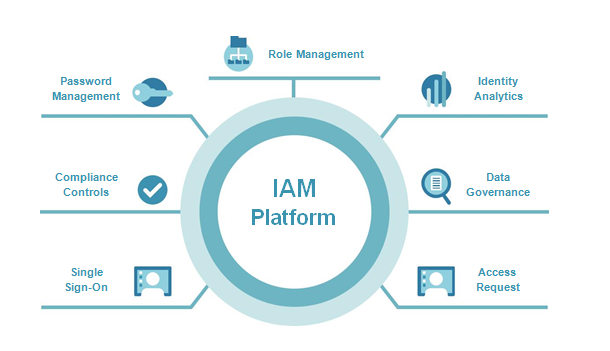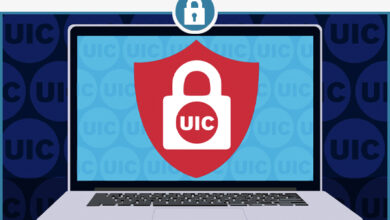What is SailPoint RBAC?

The SailPoint RBAC is a comprehensive role-based access control solution that enables you to centrally manage and enforce granular access control policies across all your critical applications. A SailPoint RBAC provides you with the ability to control user access to applications and data based on their assigned roles, ensuring that only authorized users have access to the resources they need. SailPoint RBAC is easy to deploy and manage and provides you with the flexibility to adapt your access control policies as your business needs change.
What is SailPoint RBAC?
SailPointRBAC is an important part of the SailPoint IdentityIQ platform. It is a role-based access control system that ensures that only authorized users have access to SailPoint IdentityIQ data and functions. SailPointRBAC is a critical part of the SailPoint security model and is used to control access to all parts of the SailPoint IdentityIQ platform.
SailPoint RBAC vs. Other Access Control Mechanisms
When it comes to SailPointRBAC vs other access control mechanisms, the main difference lies in the fact that SailPoint RBAC is a role-based access control system, while other access control systems are typically rule-based.
In a rule-based system, access to resources is granted or denied based on a set of predefined rules. These rules are typically static, meaning they don’t change very often. This can make rule-based systems inflexible since any changes to the rules require manual intervention.
In contrast, SailPoint RBAC is a dynamic system that automatically adjusts access permissions based on a user’s role. This makes SailPoint RBAC much more flexible than other access control systems since it can automatically adapt to changes in the environment.
One of the main benefits of SailPoint RBAC is that it reduces the need for manual intervention when granting or revoking access to resources. In a rule-based system, any change to the rules requires manual intervention from the system administrator. This can be time-consuming and error-prone.
With SailPoint RBAC, changes to roles are automatically propagated to the resources that are associated with those roles. This reduces the likelihood of errors and saves time since the system administrator doesn’t need to manually intervene every time a change is made.
With SailPoint RBAC, each action is logged, so there is a clear audit trail that can be used to troubleshoot issues or make changes to the system.
SailPoint RBAC Benefits
SailPoint Role-Based Access Control (RBAC) is a powerful tool that enables organizations to fine-tune access to critical business data and systems. By assigning roles to users, SailPoint RBAC ensures that only authorized users have access to the information and resources they need to do their jobs – no more, no less. SailPoint RBAC also simplifies compliance by providing a clear audit trail of who has accessed what data and when.
There are many benefits to using SailPoint RBAC, including:
1. Enhanced security: By assigning roles to users, SailPoint RBAC ensures that only authorized users have access to the information and resources they need to do their jobs. This reduces the risk of data breaches and unauthorized access to critical systems.
2. Improved compliance: SailPoint RBAC simplifies compliance by providing a clear audit trail of who has accessed what data and when. This makes it easier to track and monitor compliance with internal policies and external regulations.
3. Increased efficiency: SailPoint RBAC can save your organization time and money by reducing the need for manual processes and paper-based records. Automating access control with SailPoint RBAC can help your organization improve its overall efficiency and productivity.
4. Greater agility: SailPoint RBAC provides the flexibility to quickly and easily add or remove users from roles as business needs change. This makes it easier to respond to changing conditions and adapt to new opportunities.
5. better visibility: SailPoint RBAC gives you visibility into who has access to what data and when. This helps you to identify potential security risks and take steps to mitigate them.
Overall, SailPoint RBAC provides many benefits that can enhance security, compliance, efficiency, and agility within your organization. If you are looking for a way to improve your organization’s access control, SailPoint RBAC is a great solution to consider.
How SailPoint RBAC Works
SailPoint’s Role-Based Access Control (RBAC) is a powerful and flexible tool for managing access to your critical data and applications. RBAC provides a way to control access to data and applications by assigning roles to users. Roles are a collection of permissions that allow a user to perform certain actions. For example, you could create a role that allows a user to view customer data, but not edit it. Or, you could create a role that allows a user to edit customer data, but not delete it.
RBAC is a powerful tool because it allows you to granularly control access to your data and applications. You can create roles that allow just the right amount of access for each user. This makes it easy to give users the access they need to do their job, without giving them too much access and risking data leakage or security breaches.
To use RBAC, you first need to create roles. You can do this in the SailPoint Admin console. Once you have created roles, you can assign them to users. You can assign roles to users individually, or you can assign roles to groups of users.
When a user tries to access data or an application, SailPoint checks to see if the user has the appropriate role.
This two-step process of role-based access control ensures that only users who have the appropriate roles and permissions can access your data and applications.
SailPoint RBAC Use Cases
The Role-Based Access Control (RBAC) model is a powerful security tool that can be used to control access to systems and data. SailPoint, an identity and access management (IAM) platform, offers a robust RBAC solution that can be used to control access to critical resources. In this blog post, we will explore some of the key use cases for SailPoint RBAC.
1. Controlling Access to Systems and Data:
The SailPoint RBAC solution can be used to control access to systems and data. This is done by assigning roles to users and groups. Roles can be used to restrict access to specific resources or to allow access to only certain data. For example, a role can be created that allows a user to access only the customer data.
2. Managing User Permissions:
SailPoint RBAC can be used to manage user permissions. This is done by assigning roles to users and groups. Roles can be used to restrict access to specific resources or to allow access to only certain data. For example, a role can be created that allows a user to access only the customer data.
3. Enforcing Security Policies:
SailPoint RBAC can be used to enforce security policies. This is done by assigning roles to users and groups. Roles can be used to restrict access to specific resources or to allow access to only certain data. For example, a role can be created that allows a user to access only the customer data.
4. Provisioning Access to Resources:
SailPoint RBAC can be used to provide access to resources. This is done by assigning roles to users and groups. Roles can be used to restrict access to specific resources or to allow access to only certain data. For example, a role can be created that allows a user to access only the customer data.
5. Reporting on User Access:
SailPoint RBAC can be used to report on user access. This is done by assigning roles to users and groups. Roles can be used to restrict access to specific resources or to allow access to only certain data. For example, a role can be created that allows a user to access only the customer data.



